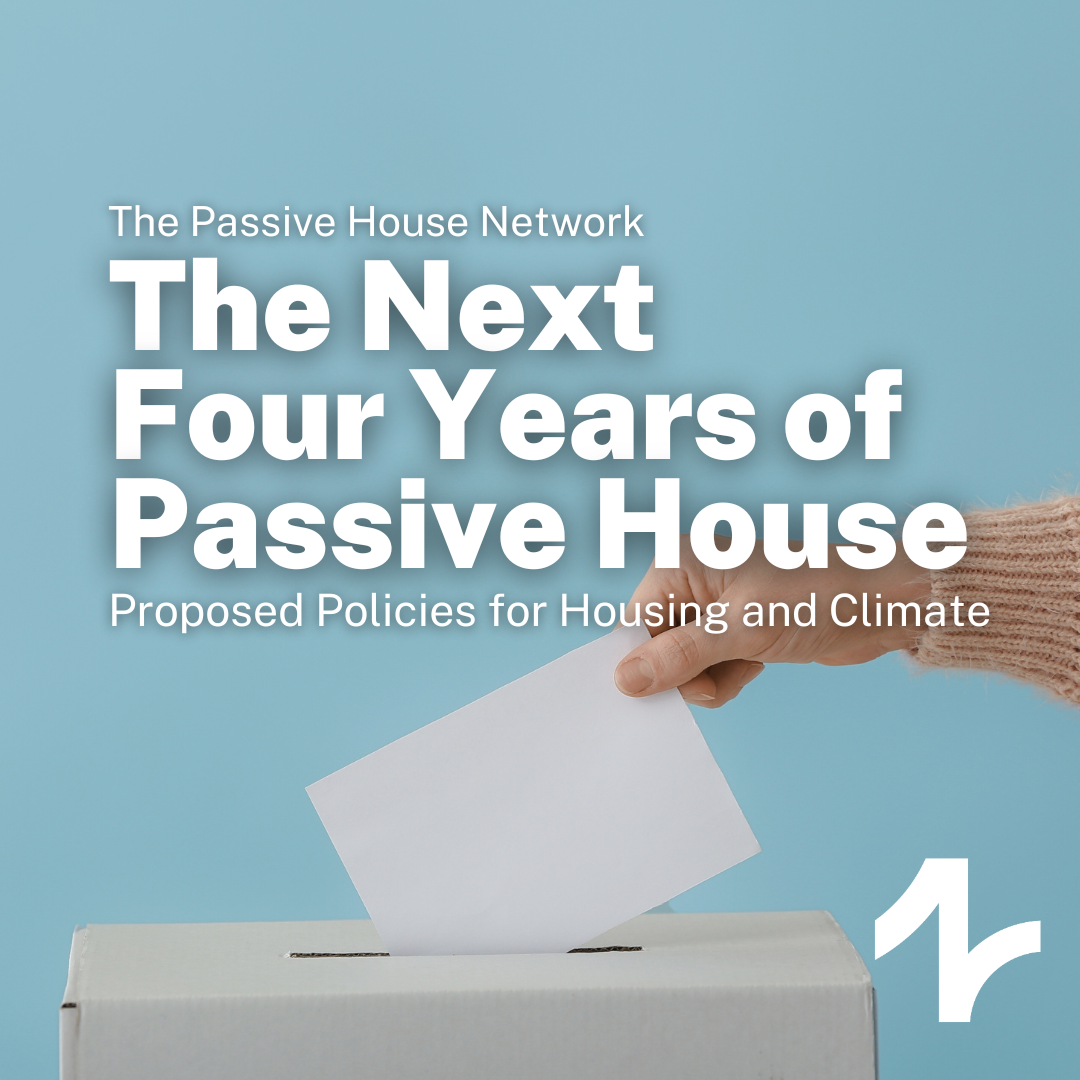The Next Four Years of Passive House
How Passive House Can Leverage an Affordable Housing Plan
The United States has been weathering a housing affordability crisis for some time now. High interest rates, low inventory, and high demand has created a perfect storm. According to The Mortgage Reports, between 2012 and 2022, America saw 6.5 million more households formed than single-family homes built, putting additional pressure on the real estate market and keeping the dream of home ownership out of reach for many.
To increase accessibility, it’s clear we have to build more housing, but given our warming planet, it’s vital to ensure that our buildings don’t contribute to the climate crisis. The Building Sector accounts for more than one-third of all greenhouse gasses, which comes from both existing and new buildings. Any new structure built to inefficient standards bakes in that inefficiency for the life of the building, which could be decades. When it comes to the climate crisis, that’s time we don’t have. We need efficient buildings, and we need them now. That’s why we advocate for Passive House standards.
Passive House is the two-in-one solution that addresses our housing and climate crises. Passive House sets the standard for efficiency, which translates to cost savings for your monthly energy bills. Our 2023 Safe At Home Report shows that Passive House buildings can lower energy usage by up to 80%, slashing energy bills and effectively flattening heating and cooling loads. It’s the key to transitioning our grid while ensuring that the housing of the future–safe, comfortable, healthy buildings–stays accessible to all.
In fact, that same report found that affordable housing accounted for approximately half of all total Passive House buildings in the country. These projects were developed through the federal Low-Income Housing Tax Credit program, and there are even more incentives to take advantage of when building Passive House. States and jurisdictions have been rolling out incentives for high-performance and all-electric homes, and thanks to the new definition of Zero Emissions Buildings, outlined by the Department of Energy, Passive House has become the standard that Energy Codes across the country can work towards.
Because of the climate-minded thinking of the Department of Energy and the policies of the current Presidential Administration, Passive House is ready to take off like never before. As this administration comes to a close, it’s worth taking a look at the policies proposed by the Harris-Walz campaign that will help keep Passive House at the forefront of our market transformation. While The Passive House Network does not endorse candidates, these proposed policies are in line with what we have advocated for, and will help Passive House more forward as an affordable, accessible, efficient solution to the problems our nation faces.
Tax Incentive for New Starter Homes Sold to First-Time Homeowners
It’s clear that our housing shortage won’t be solved unless new homes are built. Like we mentioned earlier, these new homes must be built as efficiently as possible, and a tax incentive will make high-performance building more accessible and affordable for home builders selling to first-time homeowners.
Expanding Existing Tax Incentives for Businesses Building Affordable Rentals
We can’t just build new housing. We have to build housing that’s affordable. By bringing down utility costs, Passive House is a no-brainer for these types of units, and expanding the existing tax incentive will make building these units even more inviting.
Expanding Federal Fund to Spur Innovative Housing Construction
There’s already a $20 billion federal fund available to local governments to empower innovative methods of construction and encourage developers and homeowners to build rental and housing solutions that are affordable. This proposal would add another $40 billion to that fund, on the condition that these affordable housing deliver results–a slam dunk for Passive House, which delivers predictable results every time.
$25,000 Down-Payment Support for First-Time Homeowners
As homes go up in price, more and more Americans find themselves blocked from homeownership. This proposal will allow first-time homebuyers to access an average of $25,000 in down-payment assistance, making housing more accessible than before, and helping to put a dent in our housing crisis.
Lower Home Energy Costs
Existing tax credits on home energy technologies supported by the Inflation Reduction Act have helped families save up to 30 percent off heat pumps, insulation, rooftop solar, and other clean energy technologies that Passive House takes advantage of. This proposal aims to build on these efforts to further lower energy costs and reduce the strain on our grid.
As we work to address our affordable housing crisis, it’s important to keep our climate crisis at the forefront of our plans. Passive House can help with that by providing safe, healthy, efficient buildings affordably.
Election day is Tuesday, November 5th, but if you’re voting by mail, your deadline might be sooner. Do you have a plan to vote? To make sure you’re registered or find your nearest polling location, head to Vote.org.





